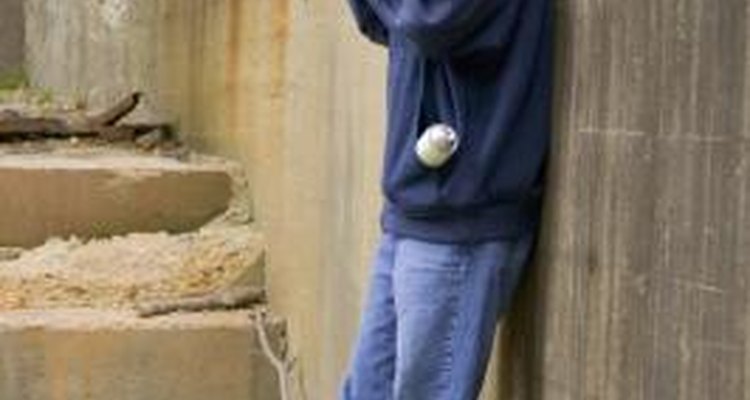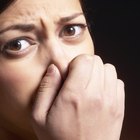
Air dusters are part of a group of household chemicals that are inhaled for a hallucinogenic, mind-altering high. The high is short, which often leads to repeated inhaling of these toxic chemicals. Huffing, as it is often called, is more common among children. The National Institute on Drug Abuse conducted a survey in 1999 that showed more than 19 percent of eighth-grade students had used inhalants at least once. The ease of obtaining inhalants like air dusters, and the serious effects of huffing, are why parents need to discuss with their children the dangers of inhaling air dusters.
Short-Term Effects
Short-term effects of inhaling air dusters include headaches, nausea, dizziness, fatigue, muscle weakness, stomach pain, mood swings, irrational or violent behavior, anger, slurred speech, clumsiness, tingling in the hands and feet, hallucination, hearing loss and delayed reflexes.
Long-Term Effects
Recognize the long-term effects of huffing by unexplained weight loss, muscle weakness, depression, indifference, muscle spasms, ineptitude and an ill-temper. Permanent damage to vital organs including the heart, liver, kidneys and lungs occurs, as does damage to areas of the brain that control learning, motor skills, vision and hearing.
Sudden Sniffing Death Syndrome
A serious and sudden consequence of inhaling air dusters is Sudden Sniffing Death Syndrome. It can happen whether it's a user's first time huffing or not. It occurs most often when inhaling aerosol products like air dusters. Sudden Sniffing Death Syndrome results in rapid and irregular heart beats that lead to cardiac arrest and death.
Suffocation
Another fatal consequence of inhaling air dusters is suffocation. When the fumes enter the lungs and central nervous system, oxygen levels are depressed so that the user is unable to breathe and suffocates.
Related Articles

What Foods Provide Calcium D-Glucarate?

Benefits of Shea Butter and Coconut Oil ...

Signs of a Broken Heart

How to Change the Date on a Rolex

How to Get Rid of the Odd Smell in a ...

Love Sick Symptoms

Can Age Spots Be Reversed?

Silent Treatment Abuse

How to Get Rid of Skunk Smell With ...

What Are the Ingredients in Proactiv?

How to Shrink Leather Boots

What Are the Causes of Hair Shedding in ...

Health Risks of Marble Dust

How to Tell If Someone Is Blushing?

How to Set the Time on a Rolex Daytona

How to Prevent Fabric Dry Rot

Definition of Skin Bleaching

Instructions for the Tissot PRC200

The Effects of the Silent Treatment

Harmful Effects of Wearing Magnetic ...
Writer Bio
Nikki Walters has been a journalist since 2008. Her writing and photography have been featured in "Points North" magazine, "fitATLANTA Health and Fitness Magazine," "Seminole Chronicle" and "Moms Like Me" magazine. Walters received a B.S. in journalism from the University of Central Florida and is a graduate of the New York Institute of Photography. She is also a Florida master gardener.
Photo Credits
Jupiterimages/liquidlibrary/Getty Images